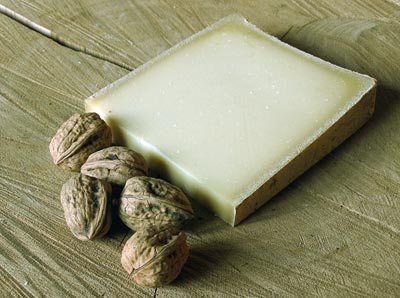A millstone of hard or semihard cheese, a Gruyère, made with the milk of Tarine or Tarentaise cows. Winter cheeses (Beaufort) have a smooth, rich, white to ivory-coloured interior and a thin, yellowish natural brushed rind while summer cheeses (Beaufort d'été) have pale yellow paste. They are made in small diaries or farmhouses in the Beaufort mountains (Beaufort de montagne) or industrially. Beaufort is eaten all year but is probably at its best from October to Christmas. The curds are cooked and pressed and have and 48% fat. Beaufort may be found in the following dimensions: 35-75 cm ( 14"-30") diameter x 11-16 cm (4-6") deep, weighing 20-70 kg (42 lb 8oz- 150 lb). Affinage may be from 3 months to 2 years. The ‘Haute Montagne’ label may only be given to Beaufort cheeses which are matured for about six months in cool damp cellars in communes of the Albertville, Saint-Jean-de-Maurienne and Bonneville districts. It takes 12 litres (25 pints) of milk to make 1 kg (2 lb) of Beaufort which is finer than Emmental and is used for gratins and fondues but makes a great table cheese.
